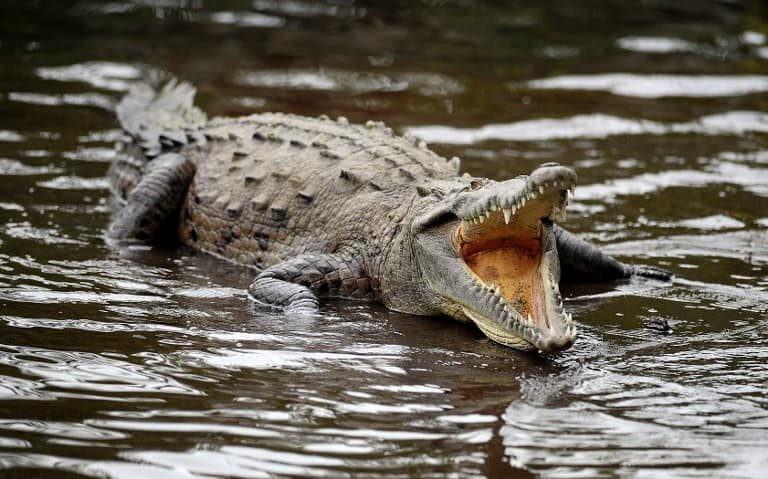Crocodiles have been around for millions of years, and waaaay back in the day nobody threatened these big fellas. Now in some parts of the world they’ve been hunted to near-extinction. And their livelihood appears threatened by climate change. One croc in Russia was even hospitalized after a large woman fell on top of it.
But with so many years on planet Earth, don’t expect crocodiles to allow puny humans to destroy everything so easily. A round-up by The American Scholar shows the latest documented croc characteristics after 65 million years of evolution. We’ve written about some of these crocodile discoveries before. It’s why the prehistoric creature is one of the coolest animals around.
Here are 4 findings that show why crocodiles are more intelligent than you realize:
1. They can climb trees
And they use tree climbing as part of their own neighborhood watch system, according to a recent study. The arboreal crocs have been seen in Costa Rica’s Santa Rosa National Park and in many other crocodile habitats worldwide. Baby crocodiles have been spotted 30-feet up in the air.
The creatures climb trees to bask in the sun, which regulates the body temperature of the cold-blooded species. But the study also notes that the crocs use the higher ground to keep watch over their surroundings since they tend to be skittish and flee from their heights when the researchers moved too closely. Escape is easy for a croc way up high and out on a limb — the reptile after spotting a threat can roll off the branch and fall into the waters below.
2. They use tools
Is that a log or a crocodile? We’ve all asked this question (hopefully before it was already too late!). Turns out crocs are aware that they are masters of disguise. The same scientists who published the paper that crocodiles can climb, also learned that the reptiles balance twigs on their nose to blend with their surroundings. The authors observed that “the crocodiles remained perfectly still for hours, and if they did move to change position, they did it in such a way that the sticks remained balanced on their snouts.”
The Los Angeles Times explains the scenario in more detail:
Were the sticks purely there by coincidence? Was it just part of the camouflage? Or could these reptiles actually be using these sticks as lures?
After studying the habits of these reptiles at four sites in Louisiana for a year, the scientists confirmed that alligators and crocodiles do indeed use twigs to lure unsuspecting birds to their doom.
3. They’ve made impressive allies
As we reported in years past, at La Selva biological reserve in Puerto Viejo, Sarapiquí, butterflies and bees have been filmed drinking caiman tears. At that time, La Selva Director Carlos de la Rosa said the butterfly fed for 15 minutes out of the eye socket of the caiman, a crocodilian species (though not a true crocodile), while the relaxed reptile failed to even blink.
The butterfly and bee were seeking the salt from their tears, a scarce resource in their environment. De la Rosa added that the tears could contain proteins and other micronutrients that help the insects survive.
How does this benefit the reptile? Well, it actually might not matter much at all to the sun-bathing beast. Or, as de la Rosa intends to find out, the relationship could be essential for the ecosystem. If the teardrop dinners are not just casual cravings, but in fact are frequently observed phenomena it would be a sign that the top predator’s tears are a key piece of La Selva’s ecosystem and its sustainability.
Here was the really strange part: The reptiles were covering their snouts with sticks only during spring nesting season, when demand for twigs was high and birds would grab every little woody scrap they could get their beaks on to build their nest.
4. They eat veggies
Crocodiles haven’t gone full-on vegan just yet. But they’re maybe feeling it out a little bit. Experimenting a little and trying to find themselves. Yes, crocodilians still consume huge amounts of meat. But research shows that the reptiles also have a hankering for nuts, berries, legumes and grains. The seeds they excrete or regurgitate help plants thrive across wide-ranging territories.
This article originally appeared in 2014

